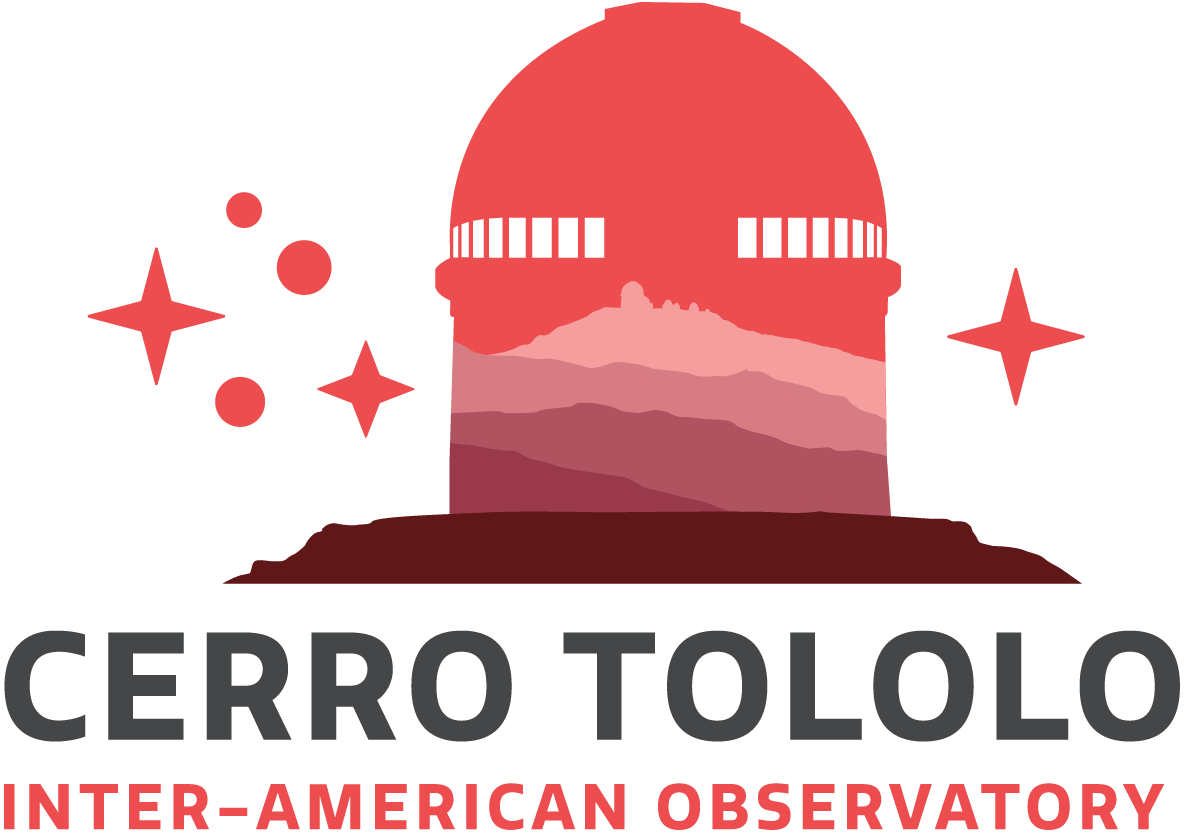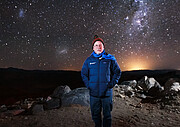Galaxy Formation at Cosmic Noon
NSF NOIRLab Director sees results of 10-year galaxy survey
1 June 2020
A project started ten years ago by NSF’s NOIRLab Director Patrick McCarthy, then an astronomer at the Carnegie Institution for Science, and fellow Carnegie scientist Daniel Kelson, has come to fruition this month with the results of theCarnegie-Spitzer-IMACS (CSI) Redshift Survey being published in the Monthly Notices of the Royal Astronomical Society.
The Universe is filled with galaxies like the one we live in, the Milky Way. Spread out across the sky, their distribution is not random — galaxies are instead laid out in patterns, groupings, and correlations known as large-scale structure. The goal of the CSI Redshift Survey was to understand how this structure affects the growth and evolution of galaxies. To study this, the team needed to collect many data points, including distances, luminosities, colors and — most importantly — mass, for half a million galaxies.
Back in 2003, before embarking on this survey, McCarthy was involved in the Gemini Deep Deep Survey (GDDS), the then deepest infrared survey of galaxies in the distant Universe. When this survey was completed, McCarthy saw an opportunity to expand on the work using the IMACS wide-field spectrograph on the Carnegie Institution for Science’s Magellan Baade telescope at Las Campanas Observatory in Chile. Carnegie astronomer Dan Kelson was experimenting with using a prism — the earliest and simplest form of a spectrograph, on IMACS and McCarthy and Kelson realized that they could build on the foundations laid by the GDDS and survey many more galaxies at once.
The CSI survey used infrared data from the Spitzer Space Telescope, along with the IMACS spectra, to measure redshifts and masses of galaxies around the time of “Cosmic Noon,” a key time for galaxy growth in the history of the Universe. A critical connection between the two datasets was provided by the multi-color images from telescopes at Kitt Peak National Observatory (KPNO) and Cerro Tololo Inter-American Observatory (CTIO), (both Programs of NSF’s NOIRLab) which helped the team determine accurate redshifts and stellar masses. In total, data on 500,000 galaxies were collected and analyzed.
The key finding of the survey was the ability to understand the growth of galaxies in dense regions of the Universe. Previously, surveys had used computational models which predicted galaxy growth based on how galaxies interacted with each other. The methods used by this team allowed them to model interactions on a much smaller scale to predict how galaxies grow within their local environments. One of the findings was that more dense clumps of galaxies grew faster, and less dense clumps grew more slowly.
“It was a real tour de force in data analytics and clever software by Dan Kelson, Andrew Benson and the rest of the CSI team,” said McCarthy of the work by lead author Daniel Kelson of Carnegie Institution for Science.
IMACS is, in some respects, a precursor to the Dark Energy Spectroscopic Instrument (DESI) at KPNO which will measure the effect of dark energy on the expansion of the Universe by measuring the spectra of many more — tens of millions — of galaxies.
More information
This research was presented in Monthly Notices of the Royal Astronomical Society, Volume 494, Issue 2, May 2020, Pages 2628–2640.
The team is composed of Daniel D Kelson, Louis E Abramson, Andrew J Benson, Shannon G Patel, Stephen A Shectman, Alan Dressler, Patrick J McCarthy, John S Mulchaey, and Rik J Williams.
Links
Contacts
Amanda Kocz
Press and Internal Communications Officer
NSF NOIRLab
Cell: +1 520 318 8591
Email: akocz@aura-astronomy.org



